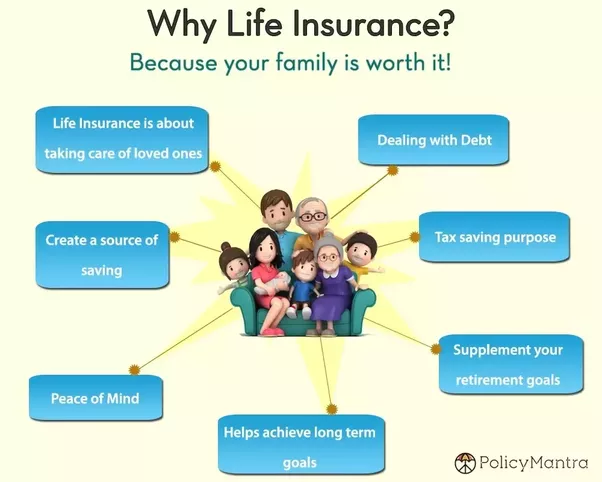The Greatest Guide To Pacific Prime
The Greatest Guide To Pacific Prime
Blog Article
Not known Incorrect Statements About Pacific Prime
Table of Contents4 Simple Techniques For Pacific PrimeThings about Pacific PrimeOur Pacific Prime DiariesThe 7-Second Trick For Pacific PrimePacific Prime for Dummies

This is because the data were accumulated for a duration of solid economic performance. Of the estimated 42 million people who were without insurance, all but about 420,000 (regarding 1 percent) were under 65 years of age, the age at which most Americans end up being qualified for Medicare; 32 million were grownups in between ages 18 and 65, around 19 percent of all grownups in this age; and 10 million were youngsters under 18 years of age, about 13.9 percent of all kids (Mills, 2000).
These price quotes of the number of persons uninsured are created from the yearly March Supplement to the Existing Populace Study (CPS), carried out by the Demographics Bureau. Unless or else kept in mind, nationwide quotes of individuals without medical insurance and percentages of the populace with various type of insurance coverage are based upon the CPS, the most commonly utilized source of quotes of insurance coverage and uninsurance prices.
Indicators on Pacific Prime You Should Know

Still, the CPS is specifically beneficial since it produces yearly estimates relatively quickly, reporting the previous year's insurance policy coverage approximates each September, and since it is the basis for a consistent collection of quotes for more than two decades, enabling analysis of patterns in coverage with time. For these reasons, along with the substantial use the CPS in various other studies of insurance policy protection that are offered in this report, we count on CPS quotes, with constraints noted.

The quote of the variety of uninsured people increases when a population's insurance policy standing is tracked for several years. Over a three-year duration starting early in 1993, 72 million people, 29 percent of the U.S. https://www.metal-archives.com/users/pacificpr1me. population, were without coverage for a minimum of one month. Within a solitary year (1994 ), 53 million individuals experienced at the very least a month without coverage (Bennefield, 1998a)
6 out of every ten without insurance grownups are themselves employed. Functioning does enhance the likelihood that one and one's household participants will have insurance, it is not a guarantee. Even members of families with 2 full-time breadwinner have almost a one-in-ten opportunity of being uninsured (9.1 percent without insurance rate) (Hoffman and Pohl, 2000).
The 6-Minute Rule for Pacific Prime
New immigrants represent a significant percentage of people without wellness insurance. One analysis has attributed a substantial portion of the recent growth in the size of the U.S. uninsured populace to immigrants that got here in the nation in between 1994 and 1998 (Camarota and Edwards, 2000). Current immigrants (those that involved the USA within the previous 4 years) do have a high rate of being without insurance (46 percent), yet they and their youngsters represent simply 6 percent of those without insurance policy nationally (Holahan et al., 2001).
The partnership between health and wellness insurance policy and access to care is well developed, as recorded later on in this chapter. Although the connection between health insurance coverage and health and wellness outcomes is neither direct neither straightforward, a comprehensive scientific and health click here for more info and wellness services research study literature links health and wellness insurance policy protection to better accessibility to care, better quality, and improved personal and population health status.
Degrees of analysis for examining the results of uninsurance. It focuses specifically on those without any type of wellness insurance coverage for any type of size of time.
Pacific Prime - Truths
The issues dealt with by the underinsured are in some aspects similar to those faced by the uninsured, although they are generally much less extreme. expat insurance. Uninsurance and underinsurance, however, involve clearly various plan issues, and the strategies for resolving them may differ. Throughout this research and the five reports to adhere to, the major emphasis is on persons without health and wellness insurance coverage and thus no assistance in spending for healthcare past what is readily available via charity and safeguard establishments
Wellness insurance coverage is a powerful aspect influencing receipt of care due to the fact that both patients and medical professionals reply to the out-of-pocket cost of services - https://www.pageorama.com/?p=pacificpr1me. Health and wellness insurance policy, however, is neither required neither adequate to access to medical solutions. Nevertheless, the independent and direct result of medical insurance protection on accessibility to health solutions is well established.
Others will get the health and wellness care they require even without health and wellness insurance, by spending for it expense or seeking it from service providers that offer care cost-free or at extremely subsidized prices. For still others, medical insurance alone does not guarantee invoice of treatment because of other nonfinancial barriers, such as a lack of health care carriers in their neighborhood, minimal access to transport, illiteracy, or etymological and social differences.
The 8-Minute Rule for Pacific Prime
Formal research concerning without insurance populations in the USA dates to the late 1920s and very early 1930s when the Board on the Price of Medical Treatment generated a collection of records regarding financing doctor office check outs and hospital stays. This problem ended up being salient as the numbers of medically indigent climbed up throughout the Great Anxiety.
Report this page